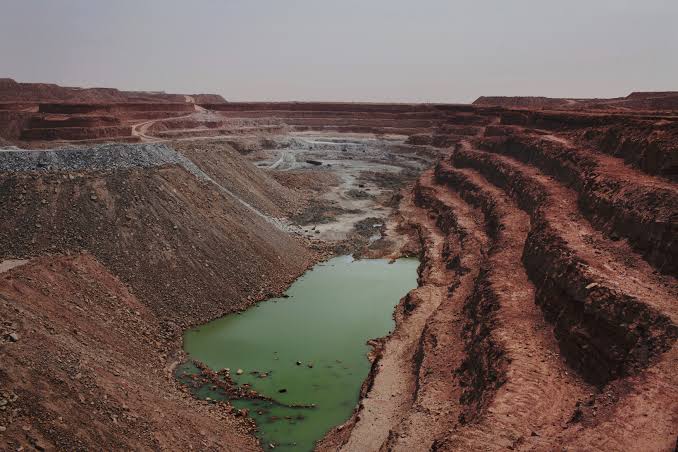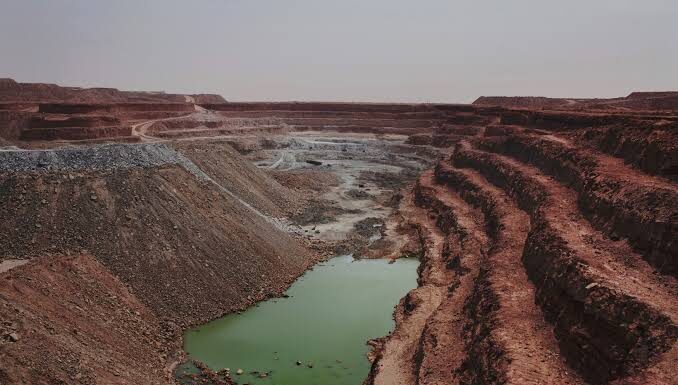
Global uranium supplies could begin to run dangerously low before the end of the century. That’s the warning from the latest edition of the “Red Book,” a detailed report released every two years by the Nuclear Energy Agency (NEA) and the International Atomic Energy Agency (IAEA). The findings are blunt: without significant new investment in uranium exploration and mining, the nuclear industry could face a major fuel shortfall by the 2080s.
The alarm comes at a moment when nuclear power is undergoing a rapid resurgence. Driven by climate targets, energy security concerns, and the growing energy demands of artificial intelligence systems, nuclear energy is seeing a dramatic spike in interest—and with it, uranium demand is accelerating.
A Supply Crisis Decades in the Making
The Red Book lays out a scenario in which global nuclear capacity could increase by 130% by 2050 compared to 2022 levels. That projection assumes a high-growth path, reflecting current trends in climate policy and energy consumption. But it also reveals a troubling gap between existing uranium supply and future requirements. Technically, the world has enough uranium resources identified on paper to meet that growth. In practice, those resources are still in the ground—and largely untapped.
Decades of underinvestment in uranium exploration and mining, fueled by historically low prices and market volatility, have left the industry ill-equipped to scale quickly. Many mines closed during the downturn, and new exploration efforts stalled. As a result, current production levels and mining infrastructure are not positioned to meet the rising demand curve.
The report is based on data compiled through early 2023. Since then, momentum behind nuclear power has only increased. Governments are expanding nuclear strategies. Private companies are funneling money into small modular reactors (SMRs). Global energy discussions are shifting rapidly toward cleaner baseload power. The actual demand picture could already be outpacing the report’s projections.
Tech Industry Influence
One of the more surprising drivers of uranium demand is the tech sector. Data centers powering AI models and cloud services consume vast amounts of energy. Tech giants like Google, Amazon, and Meta are now looking to nuclear energy to stabilize their long-term energy footprints. In some cases, they’re even investing directly in next-generation nuclear technologies. It’s a notable shift—AI, long seen as a purely digital challenge, now has a very physical dependency: uranium.
This connection between nuclear power and artificial intelligence is becoming clearer. If nuclear is to serve as the backbone for digital infrastructure, then uranium becomes a strategic commodity not just for governments but for the private sector. That reality adds new urgency to the need for reliable, long-term supply.
East Asia is taking the lead in nuclear expansion. As of the end of 2022, the region had 111 gigawatts of installed nuclear capacity. That number could more than triple by 2050. China continues to invest heavily in domestic nuclear power to diversify its energy mix and reduce reliance on coal. South Korea and Japan are also expanding capacity, driven by a mix of environmental goals and geopolitical strategy.
In the West, enthusiasm is growing too. More than 20 countries—including the US, UK, and several European nations—have pledged to triple global nuclear energy capacity by 2050. If that growth materializes, it will place even more pressure on the uranium supply chain, which is already showing signs of strain.
Exploration Shortfall Poses Long-Term Risk
One of the biggest bottlenecks isn’t demand—it’s exploration. The Red Book identifies a deep investment gap in uranium exploration. Turning a newly discovered uranium deposit into a functioning mine can take more than a decade. The industry’s current pace of exploration won’t support the kind of scale-up needed by mid-century.
Many known uranium deposits are also not economically viable without substantial capital. High-grade sources like Canada’s Athabasca Basin, Kazakhstan’s reserves, and parts of Australia offer the best potential, but developing them requires billions in upfront costs and long permitting processes.
This lag time matters. Even if uranium prices spike in response to future shortages, that alone won’t speed up the timeline for bringing new supply online. Without near-term investment, today’s resource estimates could become tomorrow’s bottlenecks.
Private Investment Picks Up—But Is It Enough?
Private sector interest in uranium is growing. Between 2020 and 2023, nuclear investment rose by nearly 50%, according to the International Energy Agency. Venture capital is now flowing into advanced mining techniques, exploration startups, and alternative uranium sources like seawater and phosphate rock. These developments could help diversify supply in the long term.
But most of these approaches remain experimental. Traditional, high-grade uranium deposits remain the most reliable way to meet the coming surge in demand. Without large-scale investment and policy support, new supply will lag behind demand, increasing the risk of shortages.
The shift toward nuclear power has also added a new geopolitical dimension to uranium. As countries double down on nuclear strategies, control over uranium resources could become a critical issue. Nations with strong reserves may find themselves in a stronger negotiating position, while others—especially those dependent on imports—face energy insecurity. Kazakhstan currently dominates global uranium production. But regional instability or trade disputes could disrupt that supply. At the same time, Western governments are trying to reduce reliance on Russian-enriched uranium. That means rebuilding domestic capabilities for enrichment, conversion, and storage—adding more pressure on already stretched supply chains.
A more secure, diversified uranium supply chain will require international cooperation, regulatory reform, and coordinated investment. Right now, those efforts are lagging behind demand.
Time Is Running Out
The Red Book’s message is unambiguous. The world cannot continue to scale up nuclear energy without also investing in the raw materials it requires. The 2080s may seem far off, but in the energy world, 55 years is the blink of an eye. From discovery to development to delivery, bringing new uranium to market is a decades-long process.
Governments and companies face a choice. They can act now—fund exploration, fast-track permitting, rebuild mining infrastructure—or they can wait and risk a crisis that could derail not just climate goals, but the foundation of digital economies increasingly reliant on stable, carbon-free power.
The world is entering a new nuclear era. Whether that era is defined by growth and stability or by shortages and disruption will depend on what happens over the next decade. The clock is already ticking, and the Nuclear Energy Agency is flashing warning signs.
The above references an opinion and is for information purposes only. It is not intended to be investment advice. Seek a licensed professional for investment advice. The author is not an insider or shareholder of any of the companies mentioned above.
The post NUCLEAR ENERGY AGENCY’S STARK WARNING: Uranium Supplies Could Run Dry by 2080s as Demand Surges appeared first on MiningFeeds.






